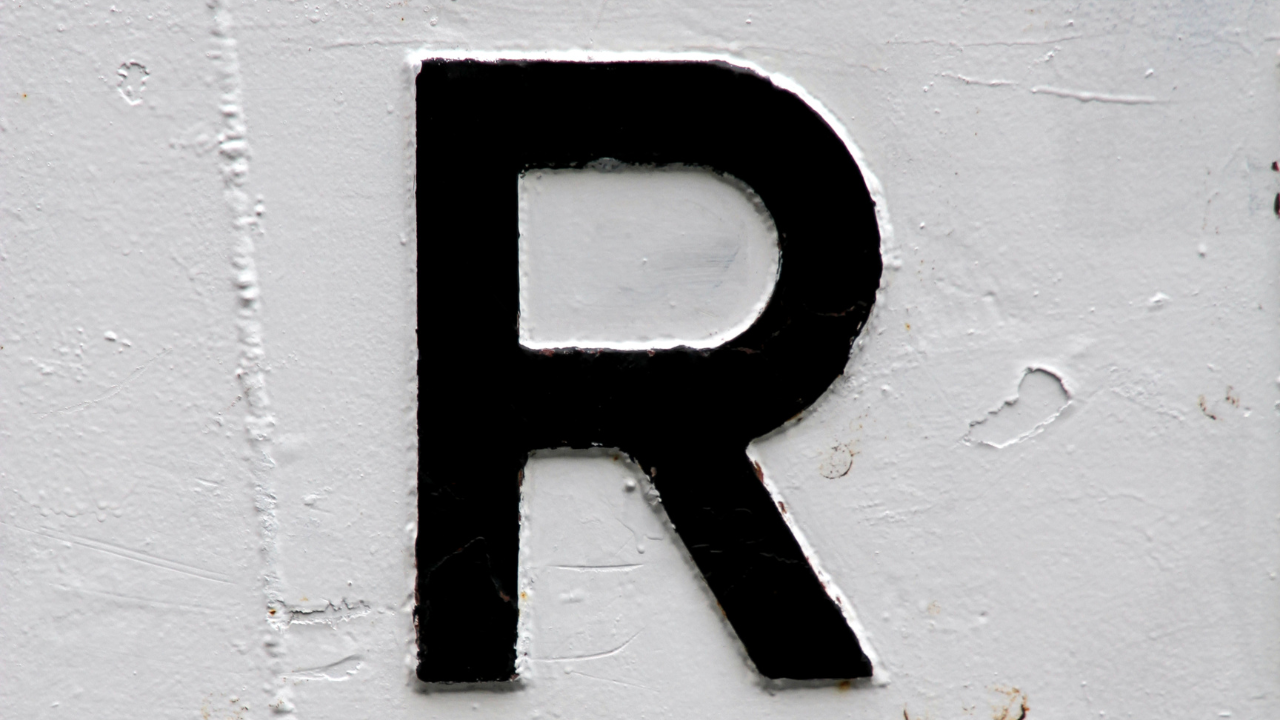Navigating NYC: Your Essential Guide To R Train Stops
The R train stops represent more than just points on a map; they are vital arteries connecting diverse neighborhoods across New York City. From the bustling streets of Queens to the historic avenues of Brooklyn, this entirely underground local subway line serves as a crucial lifeline for hundreds of thousands of daily commuters and explorers. Understanding its intricate network, service patterns, and unique characteristics is key to mastering your journey through the city's vibrant landscape.
Whether you're a lifelong New Yorker, a new resident, or a curious visitor, deciphering the nuances of the R train can significantly enhance your travel experience. This comprehensive guide delves deep into everything you need to know about the R train, from its complete list of stations and operational hours to essential service alerts and accessibility features, ensuring you're always informed and prepared for your ride.
Table of Contents
- The R Train: A Lifeline of New York City
- Unveiling the R Train Stops: A Complete Station List
- R Train Service: Understanding Operations and Schedules
- Staying Informed: R Train Service Alerts and Updates
- Accessibility on the R Train: Navigating with Ease
- Ridership Dynamics: Commuter Patterns and Peak Times
- Connecting the City: R Train Transfers and Beyond
- Mastering Your Commute: Tips for R Train Riders
- Conclusion: Your Journey on the R Train
The R Train: A Lifeline of New York City
The R train is more than just a subway line; it's an integral part of New York City's pulse, ferrying millions of passengers annually across three boroughs. As an entirely underground local subway line, it plays a critical role in daily commutes, connecting residential areas with commercial hubs and cultural landmarks. The R train runs via the 4th Avenue, Broadway, and Queens Blvd Line local tracks, offering a consistent and reliable service that touches a vast array of neighborhoods. From its northern terminus in Forest Hills, Queens, to its southern end in Bay Ridge, Brooklyn, the R train carves a path through the city's diverse tapestry, serving as a backbone for countless daily routines. Its history is intertwined with the growth of New York's subway system, evolving over decades to meet the ever-increasing demands of one of the world's most dynamic cities. Understanding the R train means understanding a fundamental aspect of life in New York.Unveiling the R Train Stops: A Complete Station List
The complete list of R train subway stops in New York City spans a significant distance, offering access to numerous key locations. As a local line, the R train always operates and stops at every station on its designated route, ensuring comprehensive coverage for its passengers. This consistent service is a hallmark of the R train, distinguishing it from express lines that might skip stations. To fully appreciate its reach, let's break down the R train stops by the major lines it traverses.Queens Boulevard Line Local Tracks
Starting in Queens, the R train begins its journey or concludes it at the Forest Hills-71 Av station, which serves as a first or last station on the line. This stretch of the line is crucial for Queens residents, providing direct access to Manhattan and Brooklyn. Key R train stops in Queens include:- Forest Hills-71 Av (Terminal)
- 67 Av
- 63 Dr-Rego Park
- Woodhaven Blvd
- Grand Av-Newtown
- Elmhurst Av
- Jackson Hts-Roosevelt Av (Transfer point to E, F, M, 7 trains)
- 65 St
- Northern Blvd
- Steinway St
- 36 St
- Queens Plaza (A significant hub, as "Queens Plaza bursts with suits and briefcases by day, while at night, a quieter crowd returns to their suburban enclaves")
Broadway Line Local Tracks
Upon entering Manhattan, the R train transitions onto the Broadway Line, navigating through some of the city's most iconic neighborhoods and commercial districts. These R train stops are often bustling, serving commuters heading to Midtown, the Financial District, and beyond. Notable stops include:- Lexington Av/59 St (Transfer to 4, 5, 6, N, Q, W trains)
- 5 Av/59 St
- 57 St-7 Av (Transfer to N, Q, W trains)
- 49 St
- Times Sq-42 St (Major transfer hub to 1, 2, 3, 7, N, Q, W, S trains, Port Authority Bus Terminal)
- 34 St-Herald Sq (Major transfer hub to B, D, F, M, N, Q, W trains, LIRR at Penn Station)
- 28 St
- 23 St
- 14 St-Union Sq (Major transfer hub to 4, 5, 6, L, N, Q, W trains)
- 8 St-NYU
- Prince St
- Canal St (Transfer to J, N, Q, Z, 6 trains)
- City Hall
- Cortlandt St
- Rector St
- Whitehall St-South Ferry (Transfer to 1 train, Staten Island Ferry)
4th Avenue Line Local Tracks
After crossing under the East River, the R train enters Brooklyn, continuing its journey south along the 4th Avenue Line. This section serves a mix of residential communities and emerging commercial areas, providing essential connectivity for Brooklynites. Key R train stops in Brooklyn include:- Court St
- Jay St-Metrotech (Transfer to A, C, F trains)
- DeKalb Av (Transfer to B, Q trains)
- Atlantic Av-Barclays Ctr (Major transfer hub to 2, 3, 4, 5, B, D, N, Q trains, LIRR)
- Union St
- 4 Av-9 St (Transfer to F, G trains)
- Prospect Av
- 25 St
- 36 St (Transfer to D, N trains)
- 45 St (Note: "For 53 St and 45 St, take the N" if the R train is experiencing service changes)
- 53 St (Note: "For service from these stations, take the N instead" during certain disruptions)
- 59 St (Transfer to N train)
- Bay Ridge Av
- 77 St
- 86 St
- Bay Ridge-95 St (Terminal)
R Train Service: Understanding Operations and Schedules
Understanding how the R train operates is crucial for efficient travel in New York City. Unlike some express lines, the R train is a local service, meaning it makes all stops along its route. This consistent pattern provides predictability, but it's also important to be aware of its operating hours and how it handles service changes.24/7 Connectivity: The R Train's Operating Hours
One of the most significant advantages of the New York City subway system, including the R train, is its round-the-clock operation. For regular weekdays and weekends, the R subway line (Broadway Local) has two routes – Uptown & Queens and Downtown & Brooklyn – both operating 24 hours a day. This continuous service ensures that New Yorkers and visitors can rely on the R train at any time, day or night. Whether you're an early bird commuter, a late-night reveler, or someone working unconventional hours, the R train is always running, ready to take you to your destination.Local vs. Express: The R Train's Service Pattern
The R train is defined as a "local" subway line. This means it is "a train which always operates and stops at every station on the line." This contrasts with "a train that does not always operate or sometimes skips a station," which describes express services. The R train's local nature ensures that every R train stop receives service, making it accessible for all neighborhoods along its route. This consistent stopping pattern is particularly beneficial for those traveling short distances within a borough or needing to reach specific local destinations not served by express lines. While it might take longer than an express train for long-distance travel, its comprehensive coverage is invaluable.Staying Informed: R Train Service Alerts and Updates
In a dynamic city like New York, subway service can be subject to changes due to maintenance, unforeseen incidents, or planned work. Knowing how to get real-time information about R train stops and service is paramount. The MTA (Metropolitan Transportation Authority) provides various tools to keep riders informed, ensuring you're never caught off guard.Leveraging Transit Apps for Real-Time Information
The most effective way to stay updated on the R train's status is through official transit apps. The Transit App, for instance, provides "NYC subway R train service alerts," with details on active disruptions. These alerts can include "major delays, closed stops, signaling issues, skipped stops, trip cancellations, or other service changes to the subway train." For example, if you're asking "Is the R train running?" or "Is the R train running today?", these apps offer immediate answers. The app also allows you to subscribe to receive notifications for any service alert, ensuring you get critical updates directly to your device. Similarly, the Moovit app is another excellent resource, allowing you to "find the closest R subway station near you and find out when is the next R subway arriving." These digital tools are indispensable for planning your journey and reacting to unexpected changes.Understanding Service Disruptions
Service disruptions can manifest in various forms, and understanding them helps in planning alternative routes. "Skipped stops" can occur, for instance, when the R train operates on express tracks due to an issue on its local line, or when a station is temporarily closed. For specific R train stops like 53 St and 45 St, it's explicitly advised to "take the N" train instead if the R train is impacted. This highlights the importance of checking alerts, as alternative routes on parallel lines (like the N train, which shares many R train stops) can often save your commute. These text maps, often found on the MTA website or within apps, "give you information about station stops, service, and transfer information for each subway line in New York City," providing a comprehensive overview of the network's current state.Accessibility on the R Train: Navigating with Ease
The MTA is continuously working to improve accessibility across the subway system, and the R train is part of this ongoing effort. "Stations that have features to accommodate customers with disabilities" are crucial for ensuring equitable access to public transit. These features typically include elevators, ramps, accessible turnstiles, and tactile warning strips. While not all R train stops are currently fully accessible, the number of accessible stations is growing, reflecting a commitment to inclusivity. For riders with disabilities, it is always recommended to check the MTA's official website or transit apps for the most up-to-date information on accessible stations along the R train route, as this information can change with ongoing construction and upgrades. Planning your route with accessible stations in mind can make a significant difference in your travel experience.Ridership Dynamics: Commuter Patterns and Peak Times
The R train's ridership patterns offer a fascinating glimpse into the rhythm of New York City. As the "veins of New York swell and surge with the city’s lifeblood," the "R train stops see some of the most varied ridership patterns in the city, painting a vivid picture of life in transit." During peak hours, particularly weekday mornings and evenings, the R train is a bustling hub of activity. Commuters from Queens and Brooklyn fill the trains heading towards Manhattan's business districts. A prime example is "Queens Plaza," which "bursts with suits and briefcases by day," as professionals from the outer boroughs make their way to offices. Conversely, "at night, a quieter crowd returns to their suburban enclaves," indicating a shift in the demographic and purpose of travel. This dynamic ebb and flow of passengers throughout the day and week highlights the R train's role in supporting diverse lifestyles and work schedules across the city. Understanding these patterns can help riders anticipate crowds and plan their travel for a more comfortable experience.Connecting the City: R Train Transfers and Beyond
The R train is not an isolated line; it is intricately woven into the broader fabric of New York City's public transportation network. Its numerous transfer points make it a vital link for accessing other subway lines, commuter rail services, and even ferries. Many R train stops offer seamless connections, allowing riders to reach virtually any corner of the city. For instance, major hubs like Jackson Hts-Roosevelt Av, Times Sq-42 St, 34 St-Herald Sq, and Atlantic Av-Barclays Ctr provide access to multiple other subway lines (E, F, M, 7, 1, 2, 3, N, Q, W, S, B, D, J, Z, L, 4, 5, 6, G). These transfer points are critical for long-distance commutes or for reaching destinations not directly served by the R train. Beyond the subway, the R train also connects to the Long Island Rail Road (LIRR) at stations like Forest Hills-71 Av (via Jamaica) and Atlantic Av-Barclays Ctr. The LIRR is "the busiest commuter railroad in North America," carrying "an average of 301,000 customers each weekday on 735 daily trains," making the R train a crucial feeder for regional commuters. While the N train is often an alternative for certain R train stops during service changes, the R train's own network of connections solidifies its role as a key artery in New York's transit system.Mastering Your Commute: Tips for R Train Riders
Navigating the R train, while generally straightforward, can be optimized with a few practical tips. Firstly, always check service alerts before you leave. As mentioned, apps like Transit and Moovit are invaluable for real-time updates on "NYC subway R train service alerts." Knowing if "the R train is running today" or if there are any "closed stops" can save you significant time and frustration. Secondly, familiarize yourself with the R train's local nature. Since it stops at every station, factor in extra travel time compared to express lines if you have a long journey. Conversely, embrace its comprehensive coverage for shorter trips within boroughs. Thirdly, be aware of alternative options, especially for R train stops like 45 St and 53 St, where the N train can be a viable substitute during disruptions. Lastly, leverage the full schedule and route on map for line R by MTA (subway) to understand transfer points and plan multi-leg journeys efficiently. These text maps are readily available and provide essential "station stops, service, and transfer information." By staying informed and planning ahead, you can master your R train commute and enjoy a smoother ride through the city.Conclusion: Your Journey on the R Train
The R train, with its extensive network of R train stops, serves as an indispensable backbone of New York City's public transportation system. From its 24/7 operation to its vital role in connecting diverse neighborhoods and facilitating transfers to other major lines like the LIRR, it embodies the city's ceaseless energy and connectivity. We've explored its complete list of stations across Queens, Manhattan, and Brooklyn, delved into its local service patterns, and highlighted the critical importance of real-time service alerts for a seamless commute. Whether you're a daily commuter relying on its consistent service or an occasional rider exploring the city, understanding the R train's dynamics empowers you to navigate New York with confidence. We encourage you to utilize the valuable resources provided by the MTA and transit apps to stay informed about schedules, service changes, and accessibility features. What are your experiences with the R train? Share your thoughts and tips in the comments below, or explore our other articles for more insights into mastering New York City's vibrant transit landscape. Your journey on the R train is more than just a ride; it's an integral part of the New York experience.
What is R? - The Statistical Computing Powerhouse | DataCamp

R: Using R to process Google Analytics

Download Grunge Style Letter R | Wallpapers.com